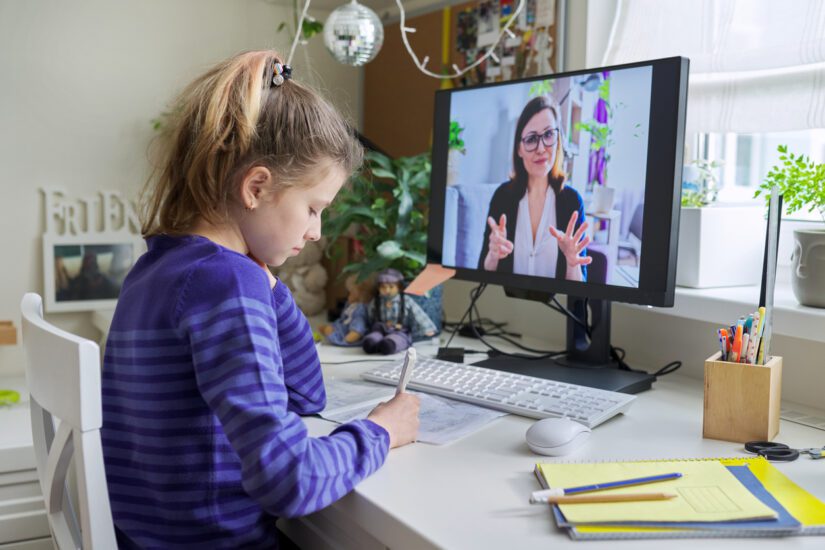Many schools now offer forms of “blended learning” by combining traditional teaching methods with virtual instruction. Learn more about how the digital revolution has changed education!
Benefits of digital learning
Digital learning has been around for a while now (literally decades) – so at this point it’s necessary to distinguish modern virtual learning from the more traditional “detached” style that many parents are already familiar with. From college courses to driver’s education, many digital learning platforms are set up on a self-serve “module” basis – complete with quizzes, chapters, and assignments that must be completed on a predetermined schedule.
Some of the major benefits of traditional digital learning include:
- Students have more control over pacing
- Notes and information are readily available
- Previous quizzes, classroom lessons, and assignments can be immediately reviewed
The main issue with “classic” digital learning is that, unfortunately, many students never actually meet their teacher (or professor). Even today, it’s not uncommon for college courses to be taught via pre-recorded lesson clips. Naturally, this is much more convenient for many teachers and professors – after all, certain core academic subjects are unlikely to change over a year’s time (for example, history classes).
Typically, students will be expected to participate in discussion forums, often with the teacher or professor making themselves available for live questions on specified days. This arrangement of digital learning is far more impersonal, and while many students do prefer this more “hands off” style, virtual learning has come a long way – especially since the pandemic.
Before we discuss the advancements in digital learning over the last few years, let’s first explore the unique benefits of traditional in-person learning and what it offers students and educators.
Benefits of in-person learning
It goes without saying that in-person, face-to-face instruction is hard to top. When tutors have the ability to share a physical location with students, it encourages a more active and engaged approach to instruction. Tutors will be able to:
- Highlight and annotate notes and assignments
- Use physical demonstrations to illustrate concepts
- Manage background distractions more effectively
- Provide a more personalized form of back-and-forth instruction
- Allow the student complete control over a session’s pacing
- Offer real-time feedback on the student’s performance
For many years, the only way to get these benefits was to, well, meet up in real life. However, “blended learning” offers an incredible hybrid of both these instruction styles!
Blended learning has entered the chat
During the pandemic, it became overtly clear that traditional digital learning methods would not work for younger students. It’s one thing to ask college (or even high school) students to log onto a weekly portal and self-manage their time, but this becomes a lot more difficult when dealing with, say, middle school children.
Traditional in-person learning methods were needed – but unfortunately due to school closures, this simply wasn’t a possibility. The solution? Blended learning!
With the power of virtual classrooms, webcams, and daily Zoom meetings, teachers and tutors were able to offer a comparable in-person experience without anyone having to leave the comfort (and safety) of their own homes.
Blended learning provides the best of both worlds – students retain the benefits of a personalized, individual approach by working face-to-face with an instructor…just in a digital environment! At the same time, students also receive the benefits of traditional online instruction, including the ability to easily review past notes, recorded lessons, and much more.



